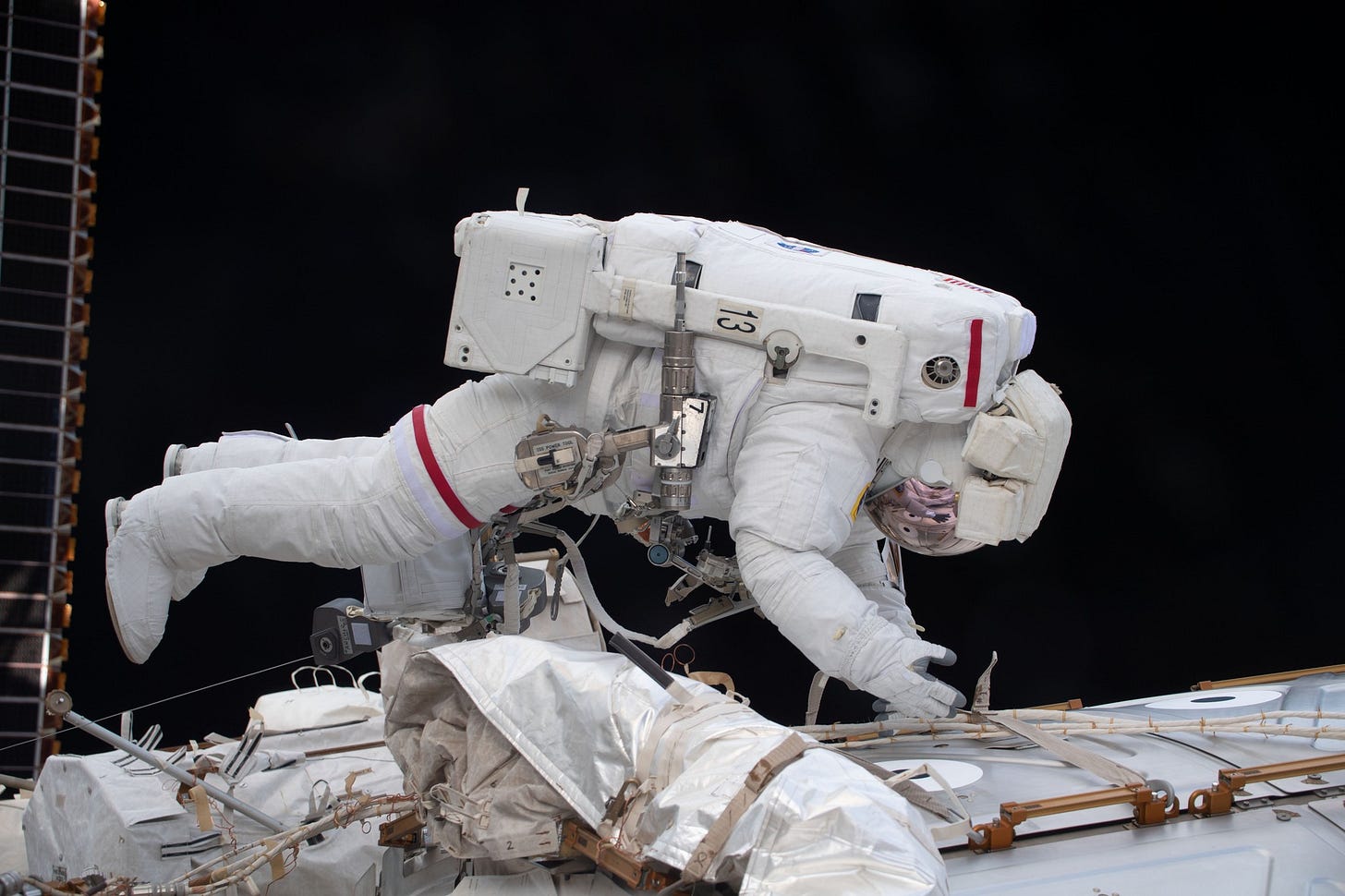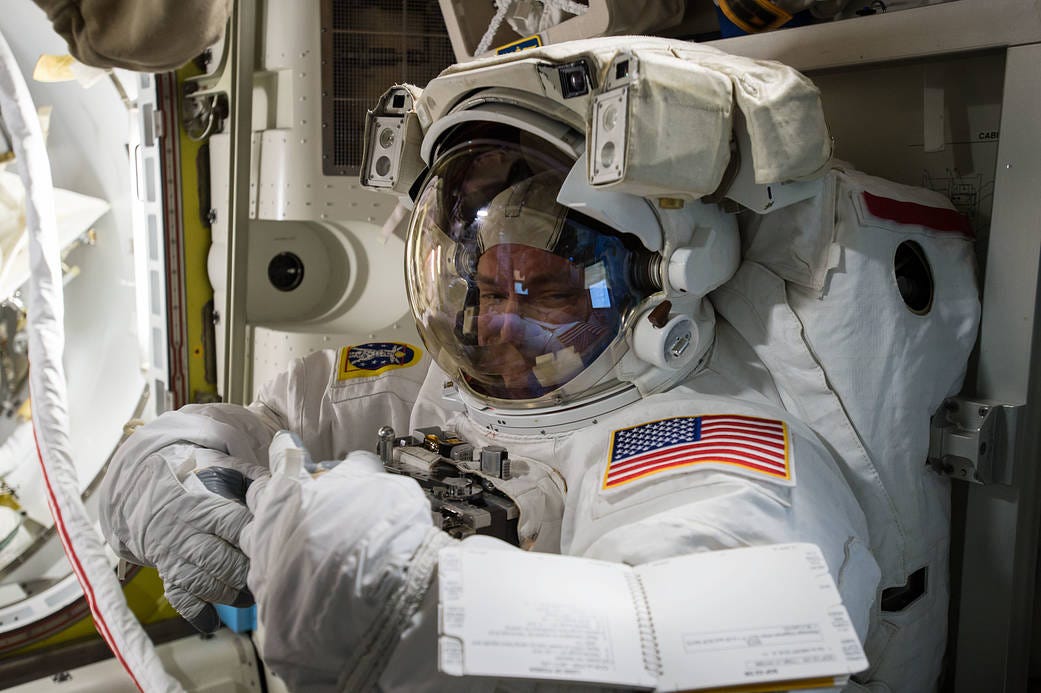How does a spacewalking astronaut scratch an itch?
Insight from inside a spacesuit as told to Tom Cruise

Thanks to those who have shared Full Throttle. The newsletter will be delivered twice a week for free once you subscribe here. Follow me on Twitter, Instagram, and Linkedin.
While wearing masks for the past two years, we’ve all pulled them down to scratch our nose or face. But how do you do that inside a pressurized spacesuit outside of the International Space Station (ISS) during a spacewalk? Tom Cruise wanted to know. The actor got a detailed answer from an astronaut recently back from a six month trip to space.
“As you put the suit on and you know you're going to pressurize it, that's when everything does start to feel, you start, oh, is that an itch coming?,” Victor Glover told Cruise during a virtual interview. Glover was part of four spacewalks on his rookie trip to space last year as part of the Crew-1 NASA mission.

Expedition 45 Commander Scott Kelly tries on his spacesuit inside the U.S. Quest airlock of the International Space Station. Notice the white foam pad to the right of his mouth. (Credit: NASA)
The spacesuit an astronaut uses to venture outside ISS is officially called an Extravehicular Mobility Unit (EMU). Many describe the suit as a small spacecraft that protects the astronaut from the extremes of space. It’s a hardshell life support system with, “an oxygen supply, electrical power, water-cooling equipment, ventilating fan, and an in-suit drink bag.” A back scratcher is not included. But look closely at photos from spacewalks and you can see how astronauts get some relief.
VALSALVA DEVICE
Along the base of the helmet near the astronauts chin is a removable foam pad. Its real purpose allows an astronaut to press their nostrils on the pad to blow to equalize the pressure in their ears. You’ve undoubtedly felt equalization going up in the mountains or in a jetliner. When you push air into your eardrums to deal with changing pressure is called a Valsalva Maneuver.

David Saint-Jacques of the Canadian Space Agency completed the first spacewalk of his career on Monday, April 8, 2019. The Valsalva device is below his nose. (Credit: NASA)
“I think I can speak for the entire astronaut corps to say -- its number one use is to rest your chin on, so that you can rest, and then number two is to scratch your face,” Glover said in the interview during the World Extreme Medicine conference last November. An itch elsewhere on an astronaut’s body can go unscratched for the length of a spacewalk that averages between 6-8 hours.
SCRATCH AN ITCH
Glover says it’s special when the spacesuit comes off. “You’re definitely looking for some relief when you take it off. There's all kind of little itches or aches and pains.”
Astronaut Victor Glover explains how astronauts can scratch an itch with a Valsalva device. (Credit: NASA/World Extreme Medicine)
There is a more serious spacesuit issue for Glover that he said was still under investigation last fall. During three of his spacewalks the Naval Aviator and former test pilot had significant irritation in his eyes.
EYE IRRITATION
During a spacewalk with Mike Hopper, Glover told his crewmate about the irritation. They then explained the problem to controllers on the ground. “I actually had to just stop and hold still, and I just kept blinking, waiting for my eye to water,” Glover said. Blinking worked. He continued, finishing all three spacewalks.
Glover believes the irritation was likely caused by something in the suit. Two possibilities, he believes, are the anti-fog drops used on the helmet visor or the gel used with biometric pads to monitor the astronaut’s vital signs.
Glover talks about the three instances of eye irritation he suffered during spacewalks. (Credit: NASA/World Extreme Medicine)
Glover said on one spacewalk he didn’t use the anti-fog drops but still had the irritation. “I’m not sure what it was. It definitely wasn't water, and it wasn't my own sweat: I've had my own sweat in my eyes plenty of times at the gym, and it didn't feel like that,” said Glover.
That mystery remains. But now we know how a little pad can scratch that itch.
(Cover photo: NASA astronaut Victor Glover during a spacewalk on the International Space Station February 28, 2021. Credit: NASA)




